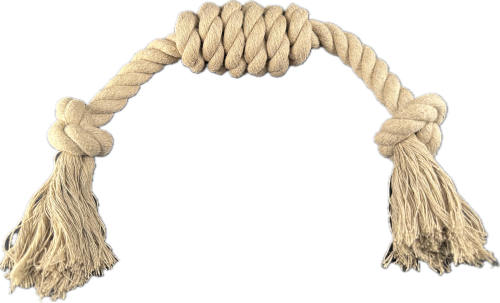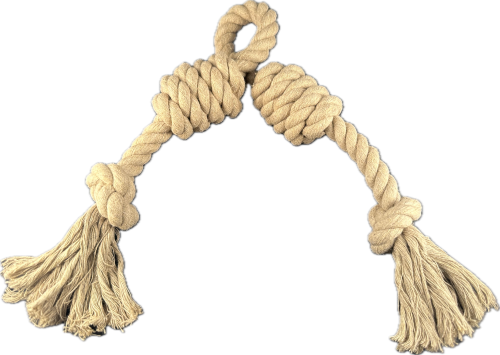
🔥 What Is a Destructive Chewer?
Destructive chewers go beyond casual nibbling. These dogs tear through furniture, shoes, and even walls if left unchecked. This behavior usually stems from unmet needs—not malice.
Common traits of destructive chewers:
- Territorial chewing – They’ll gnaw anything in their space.
- High intensity – They chew with serious force, destroying standard toys.
- Stress, anxiety, or boredom – Common in under-stimulated or isolated dogs.
- No proper outlet – Without the right chew toys, household items become targets.
⚠️ What Can Go Wrong
Destructive chewing isn’t just frustrating—it’s dangerous.
- Damaged furniture and valuables
- Ingestion of harmful materials
- Dental injuries or digestive issues
✅ How to Manage Destructive Chewing
1. Use Durable Dog Toys
Not all toys are created equal. Choose chew-proof rope toys or dog toys for aggressive chewers made with natural, safe materials like hemp. These hold up under pressure and are designed for tough dogs.
🦴 Try a rope toy made from hemp-cotton blends: biodegradable, durable, and safe.
2. Boost Physical & Mental Activity
- Go on daily walks or active play sessions.
- Use treat-dispensing or puzzle toys to challenge their mind.
- Rotate toys to keep interest fresh.
3. Address Underlying Anxiety
If stress or separation anxiety is the cause:
- Use interactive toys that keep your dog occupied.
- Explore pheromone diffusers or vet-approved calming aids.
- Create a comforting environment with a routine.
4. Train & Redirect Behavior
Work with a professional trainer if needed. Use positive reinforcement to redirect chewing onto appropriate toys.
5. Dog-Proof Your Space
Limit access to items like shoes, cords, or furniture by creating a dog-safe zone with engaging, durable toys.
6. Supervise and Observe
Especially when trying new toys, keep an eye on how your dog interacts to ensure safety.
🛠️ Choosing the Right Toys for Aggressive Chewers
When picking a toy for a destructive chewer, look for:
- “Aggressive chewer dog toy” on the label
- Natural hemp rope construction
- Tough stitching and knotting
- Non-toxic, plastic-free materials
✅ Categories to explore:
[Durable Dog Toys] • [Chew Proof Rope Toys] • [Pit bull Chew Toys] • [Eco-Friendly Dog Toys]
🐕🦺 Final Thoughts
Every destructive chewer has a reason behind the behavior. With the right tools, training, and durable toys—like those from Tough Pup Toys—you can give your dog a healthy outlet and protect your home.




